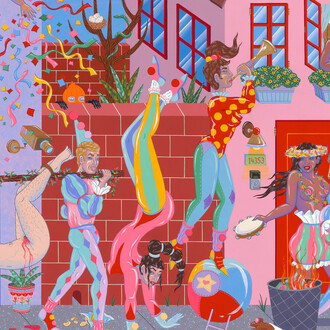The habitat halls were an integral part of the expansion of the Museum (then the Los Angeles County Museum of History, Science, and Art) in the early 1920s. They provided visitors with a close-up view of the natural environments in which the animals were found. This was a particularly important aspect of the Museum's mission because, even then, many of the larger mammals were becoming rare due to human encroachment into their preferred habitats.
In 1920 the Hon. R. F. McLellan, Chairman of the Board of Supervisors of Los Angeles County, organized an expedition to Alaska to secure specimens for the new Museum exhibits. These and other specimens were incorporated into the first new wing of the Museum, which opened on November 27, 1925 and featured North American habitats on the main floor. The new extension was proudly announced as the world’s first large museum building in which permanent display groups were lighted only and entirely by artificial light. The bison exhibit, comprising animals that had been collected from Antelope Island in Utah’s Great Salt Lake but displayed in a setting depicting the Platte River of Nebraska, was at that time the world’s largest permanent group display of a single species of mammal.
The African Mammal Hall opened in 1930 and was made possible by the generous offer of Mr. Leslie Simson to provide, at his own expense, examples of a comprehensive suite of large African mammals. The North American Mammal Hall on the second floor was open by the time of the 1932 Olympics, when it was described as a hall of marine, avian and mammalian habitat groups. The mammal mounts in all three halls utilized state-of-the-art techniques and the backgrounds were painted by well-known artists.
In the ensuing years, new species have been added to the dioramas of all three halls and some of the scenes have been changed. For example, the geographic setting of the bison herd is now Wyoming. However, because the depicted habitats were meticulously researched, they have continued to provide an accurate record of the environments in which the large mammals of Africa and North America may still be found. All the dioramas in the main floor African and North American Mammal Halls were refurbished and re-lamped in January 2006. The second floor North American Hall was refurbished in May 2007. New birds, reptiles and insects continue to be added to the dioramas.
















